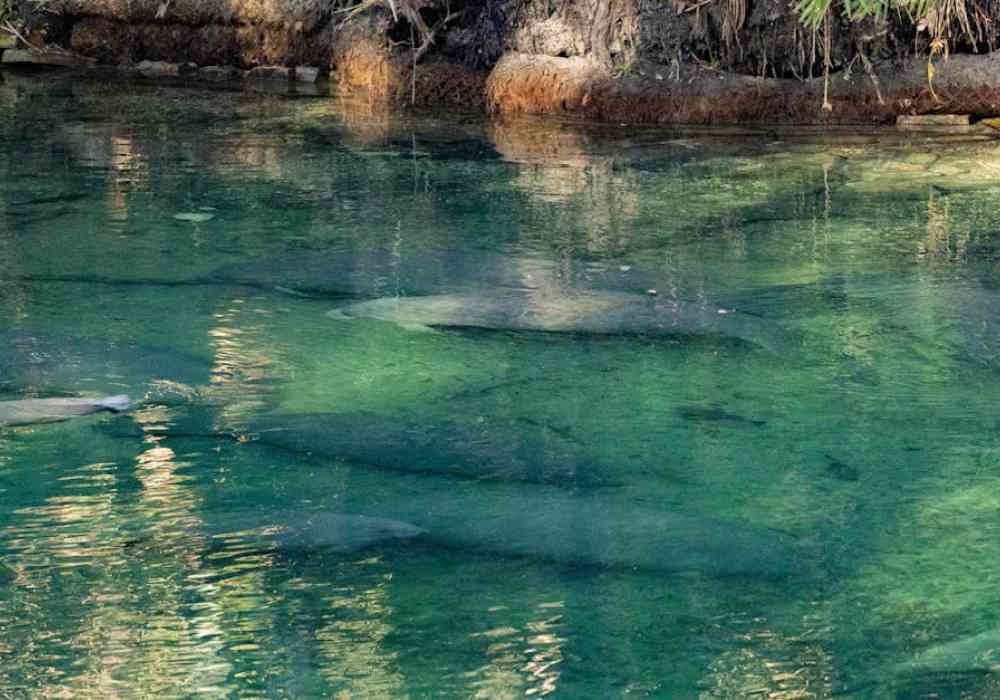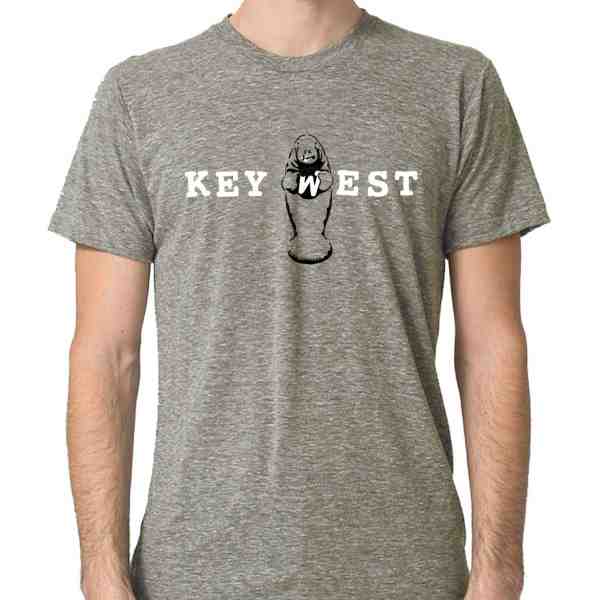Manatees in Peril: Understanding Human Impact
How are florida manatees affected by human activity? Human activities have significantly impacted the gentle giants of Florida’s waters, leaving them facing numerous threats, including:
- Boat collisions: Manatees are frequently injured or killed by boats, with propellers causing severe cuts and trauma.
- Habitat loss: The development and alteration of marine environments have led to the destruction of vital seagrass beds, leaving manatees with dwindling food sources.
- Pollution: Runoffs and waste contribute to harmful algal blooms and red tide, further depleting their food supply and causing health issues.
Florida manatees, larger relatives of elephants, are not just iconic symbols of the state’s wildlife but also critically dependent on the delicate ecosystems within its rivers and coastal waters. These environments are under severe threat due to human encroachment. As manatees steer this changing world, their plight serves as a poignant reminder of our impact on the environment.
My name is Chris Higgins. With a background in pop art and design, I have spent years exploring the intricate interplay between humans and nature, and how are florida manatees affected by human activity. This passion for understanding drives my creative process at Handshucked Art and Designs. Now, let’s dig deeper into the specific challenges manatees face and explore potential solutions.
How Are Florida Manatees Affected by Human Activity
Boat Collisions
Manatees are particularly vulnerable to boat collisions. These slow-moving creatures often find themselves in the path of fast-moving boats. Their inability to dodge quickly, coupled with their difficulty in hearing low-frequency engine noises, makes them easy targets. A staggering 96% of adult Florida manatees bear scars from boat strikes, and 1 in 4 have been hit multiple times. These injuries not only cause pain but can also lead to mobility impairment, making it harder for them to find food and escape predators.
Habitat Loss
Habitat loss is another major issue. Manatees rely on seagrass beds for food, but these vital areas are being destroyed. Coastal development and pollution have led to significant seagrass depletion, leaving manatees with less to eat. Additionally, manatees need warm water refuges during the winter. Many natural springs have become inaccessible due to barriers and reduced water flow, pushing manatees to congregate near industrial power plants for warmth. As these plants close or switch to cleaner energy, manatees may lose these critical winter havens.
Pollution and Water Quality
Pollution further compounds these problems. Nutrient runoff from fertilizers and waste contributes to harmful algal blooms, including toxic red tide events. These blooms poison the water, killing seagrass and posing direct health risks to manatees. The decline in water quality has led to an Unusual Mortality Event, where starvation and pollution-related illnesses have caused the deaths of over 1,100 manatees in 2021 alone.
Human activities are reshaping the landscapes that manatees call home. From vessel strikes to habitat degradation and pollution, the challenges are immense. Yet, understanding these issues is the first step towards creating effective solutions.
Major Threats to Manatees
Manatees face numerous threats, many of which stem from human activities. These threats have led to alarming rates of manatee deaths, particularly due to starvation, mess, and cold stress.
Starvation
Starvation is a critical issue for manatees, primarily due to seagrass loss. Seagrass is the main food source for manatees, but pollution and coastal development have severely depleted these underwater meadows. The Indian River Lagoon has been hit hardest, with significant seagrass die-offs contributing to an Unusual Mortality Event. In 2021, over 1,100 manatees died, many from starvation, as they struggled to find enough food.
Problem and Other Human-Related Threats
Manatees also face threats from fishing gear, litter, and poaching. Problem in fishing lines and nets can lead to injury or death. Discarded litter, such as plastic bags and fishing hooks, poses ingestion risks. Although poaching is less common, it still occurs, further endangering this vulnerable species.
- Fishing Gear Problem: Manatees can become trapped in lines or nets, leading to injury or drowning.
- Litter: Items like plastic bags can be mistaken for food, causing blockages or poisoning.
- Poaching: Though illegal, poaching remains a threat, albeit a less frequent one.
Cold Stress and Natural Threats
Cold stress is another significant threat. Manatees require warm water to survive cold weather. Historically, they sought refuge in natural warm water springs. However, many springs have been altered or lost due to human development. As a result, manatees have turned to industrial power plants that discharge warm water. But as these plants close or reduce outflows, manatees lose these essential warm havens.
- Temperature Drops: Sudden cold snaps can be deadly for manatees, as they cannot tolerate prolonged exposure to cold water.
- Warm Water Springs: Many have been impacted by development, reducing natural habitats for manatees.
- Industrial Power Plants: While they provide warm water, reliance on these man-made sources is precarious as plant operations change.
Understanding these threats is crucial for developing strategies to protect manatees. By addressing these issues, we can help ensure the survival of these gentle giants.
Conservation Efforts and Solutions
Efforts to protect manatees have ramped up as threats to their survival become more pressing. Restoration projects, water quality improvement, and community education are key strategies in safeguarding these gentle giants.
Restoration Projects
Restoring manatee habitats is vital. A major focus is on seagrass restoration, as these underwater meadows are the main food source for manatees. In Sarasota County, Florida, successful restoration efforts have transformed 80 acres of seagrass into over 250 acres, providing ample grazing grounds for manatees .
The Everglades restoration is another critical project. By improving water flow, this initiative helps revive seagrass beds and other crucial habitats. This large-scale effort not only bolsters manatee populations but also supports the broader ecosystem.
Water Quality Improvement
Improving water quality is essential to prevent further seagrass loss. Projects like stormwater treatment and septic tank connections help reduce nutrient runoff, which can fuel harmful algal blooms. In Brevard County, residents have invested in clean-up projects that include planting mangroves and establishing oyster gardens to naturally filter water .
These initiatives aim to create a healthier environment for manatees by reducing pollution and enhancing water clarity, which is vital for seagrass growth.
Community Education
Educating the public is crucial for manatee conservation. Boater awareness programs teach vessel operators to avoid collisions with manatees by adhering to speed limits and staying alert in manatee zones. Encouraging passive observance when interacting with wildlife helps ensure that manatees are not stressed or harmed by human presence.
Moreover, promoting wildlife protection through community workshops and educational campaigns fosters a culture of conservation. By spreading awareness and knowledge, communities can play an active role in safeguarding manatees and their habitats.
Through these combined efforts, we can better protect manatees and their ecosystems, ensuring that future generations can enjoy these incredible creatures.
Frequently Asked Questions about Manatees and Human Impact
How are humans affecting the manatees in Florida?
Human activities significantly impact Florida manatees in various ways. One major issue is boat collisions. Manatees often suffer from vessel strikes, which can cause serious injuries or even death. These slow-moving creatures are hard to spot from fast-moving boats, making them vulnerable to accidents.
Another human-related threat is habitat loss. Manatees rely heavily on seagrass beds for food. However, coastal development and pollution have led to the degradation of these essential habitats. Without enough seagrass, manatees face starvation, as they struggle to find adequate food supplies.
Pollution also poses a major threat to manatees. Nutrient runoff from fertilizers and waste leads to algal blooms, like red tide, which can be toxic to marine life. These blooms reduce water quality and further diminish the already limited seagrass beds, compounding the challenges manatees face.
What is the biggest threat to manatees in Florida’s waters?
The most significant threat to manatees in Florida’s waters is vessel strikes. Each year, numerous manatees are injured or killed by boats. These gentle creatures often bear scars from propellers, showcasing the ongoing danger they face. Efforts to raise awareness among boaters and enforce speed limits in manatee zones are crucial to reducing these incidents.
What are the 3 main environmental threats to the manatee?
Three major environmental threats to manatees include pollution, starvation, and mess (mess in debris).
Pollution from agricultural runoff and wastewater contributes to harmful algal blooms, which degrade water quality and kill seagrass beds. This loss of habitat directly affects manatee survival.
Starvation is a consequence of seagrass depletion. As their primary food source dwindles, manatees struggle to find enough to eat, leading to increased mortality rates.
Lastly, mess, or mess in fishing gear and debris, poses a significant risk. Manatees can become trapped in discarded lines or nets, leading to injury or death. Programs focused on cleaning up waterways and promoting responsible waste disposal are essential in mitigating this threat.
Conclusion
At Handshucked Designs, we are deeply committed to raising awareness about the plight of Florida manatees. These gentle giants face numerous challenges due to human activity, and it’s crucial that we all play a part in their conservation. Our unique artwork, like the “Hungry Manatee” series, is designed to spark interest and conversation about these endangered creatures and the issues they face.
Conservation is more important than ever. With manatees facing threats from boat collisions, habitat loss, and pollution, efforts to protect and preserve their environment are vital. Initiatives like seagrass restoration projects and community education programs are making a difference, but there is still much work to be done.
Looking to the future, we must continue to support and expand these efforts. This includes advocating for better water quality, creating more protected areas, and educating the public on the importance of coexisting peacefully with manatees. Together, we can help ensure that future generations can enjoy the presence of these magnificent creatures in Florida’s waters.
To learn more about our work and explore our art and designs, visit Handshucked Designs. Let’s protect our manatees and their habitats for years to come.






